 Sale is ending soon
Sale is ending soon
Kutani Ware Japanese Porcelain Tokkuri Sake Decanter with Auspicious Peach, Fruit, Flower, and Bird Design
Kutani Ware Japanese Porcelain Tokkuri Sake Decanter with Auspicious Peach, Fruit, Flower, and Bird Design
KUTANI WARE ⭐⭐⭐⭐⭐
 Star Seller. This seller consistently earned 5-star reviews, shipped on time, and replied quickly to any messages they received.
Star Seller. This seller consistently earned 5-star reviews, shipped on time, and replied quickly to any messages they received.
 Returns & exchanges accepted
Returns & exchanges accepted
- Your order will be shipped within 48 hours
Couldn't load pickup availability
Indulge in the exquisite Kutani Ware Japanese Porcelain Tokkuri Sake Decanter, adorned with auspicious peach, fruit, flower, and bird design. Handcrafted with traditional techniques, this decanter not only serves sake but also adds a touch of art and elegance to your table. Enhance your drinking experience with this premium piece.
Share
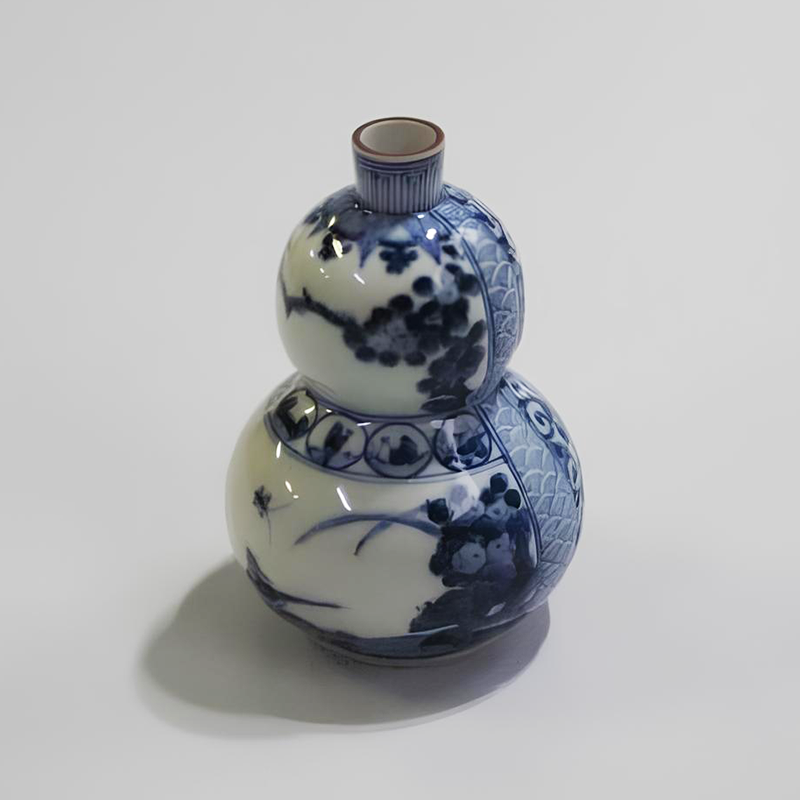
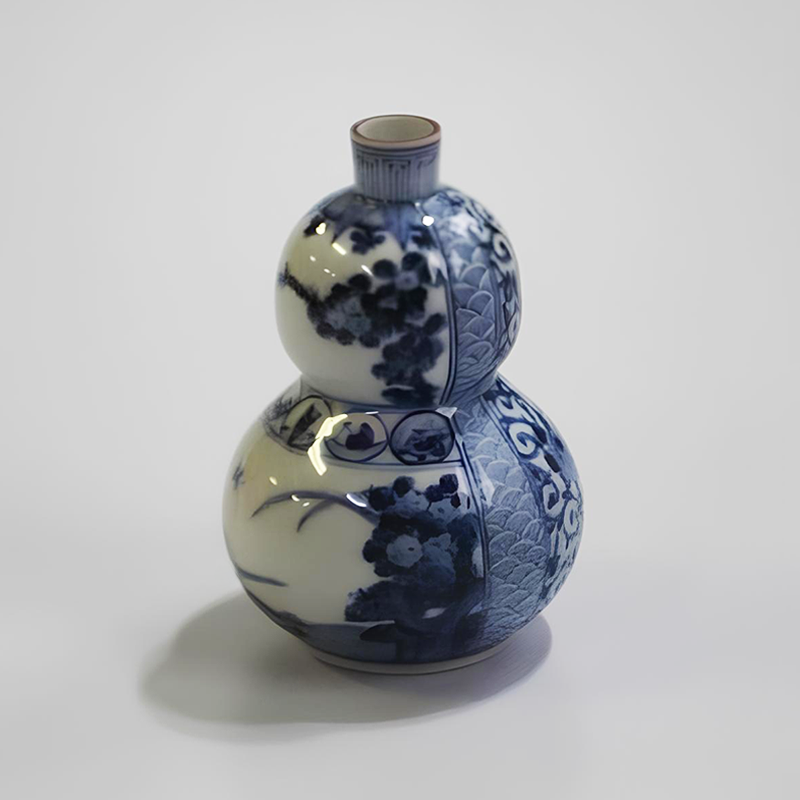
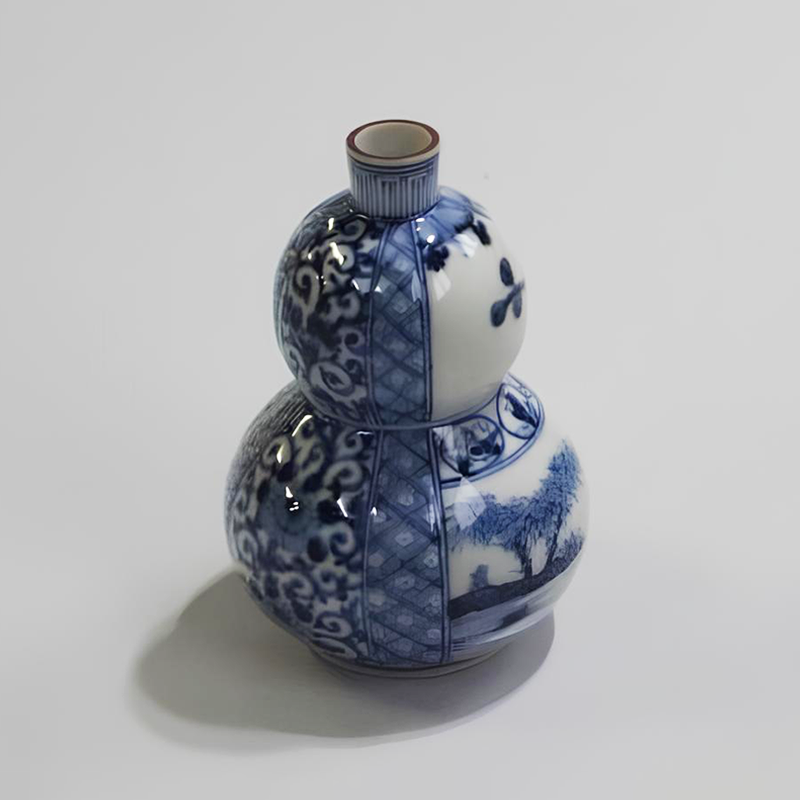
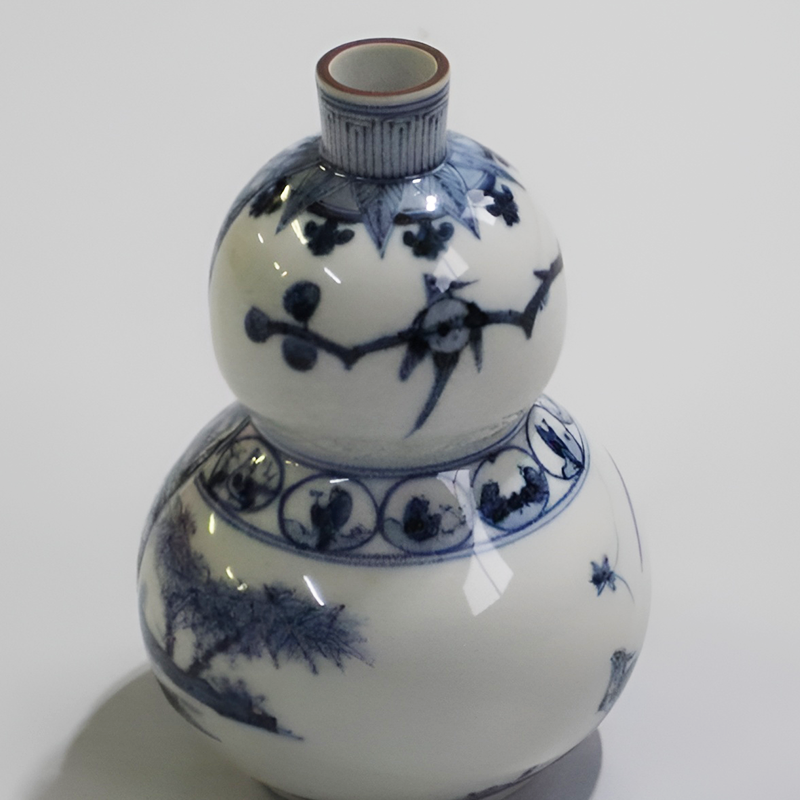
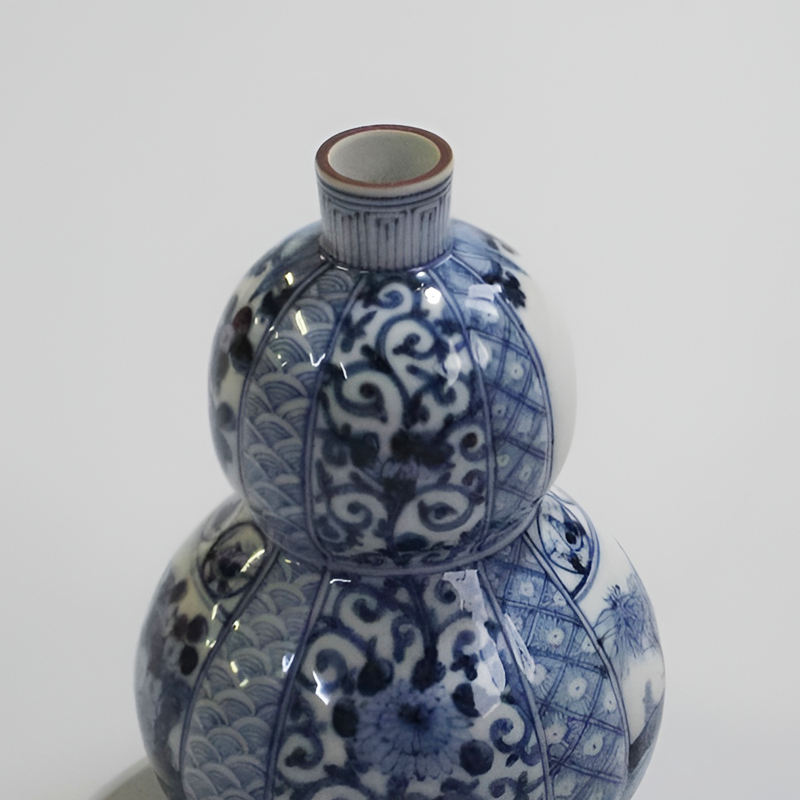
Features
Item Form: Kutani Ware Sake
Quantity: 1 Sake Bottle
Size(Width x Height): Sake Bottle 8cm x 12cm
Material: Kutani Ware Porcelain
Master: Yamamoto Chozo
Origin: Nomi-shi, Ishikawa Prefecture, Japan
-

Handcrafted
-

Traditional Craftsmanship
-

Authentic Japanese Design
-

Gift-Worthy

Graceful Harmony: Tokkuri Sake Decanter with Auspicious Peach, Fruit, Flower, and Bird Design
Embrace the artistry of our Tokkuri sake decanter, adorned with auspicious motifs of peaches, fruits, flowers, and birds. Each piece is a masterpiece of traditional Japanese craftsmanship, meticulously handcrafted to blend beauty with functionality.
The motifs symbolize prosperity, longevity, and the beauty of nature, creating a captivating visual narrative that enhances any dining or entertaining experience. Our Tokkuri sake decanter is not only a vessel for sake but also a statement piece that adds cultural richness to your home decor.

Artistic Elegance: Tokkuri Sake Decanter Featuring Auspicious Peach, Fruit, Flower, and Bird Motifs
Crafted with attention to detail and durability in mind, our sake decanter is perfect for both everyday use and special occasions. Whether displayed as a centerpiece or used to serve guests, it promises to elevate your dining table with its exquisite design and symbolic significance.
Ideal for sake enthusiasts and collectors of fine art, our Tokkuri sake decanter invites you to indulge in the elegance and tradition of Japanese culture. Enhance your dining rituals and celebrate life's moments with a touch of artistic flair and cultural heritage.
The Origin of Kutani Ware
-

Origins of Kutani-Yaki: A Legacy from the 17th Century
The history of Kutani-yaki dates back to the 17th century, initiated by Maeda Toshiharu, the first Lord of the Daishoji Domain. He entrusted his retainer, Goto Saijiro, with the task of studying pottery techniques in Hizen-arita following the discovery of the magnetite technique in Kaneyama, Kutani.
-

The Birth of Kutani-Yaki in Sannaka-cho
Today, Kutani-yaki thrives in Sannaka-cho, Ishikawa Prefecture, where Goto Saijiro mastered ancient pottery techniques. Establishing a kiln in Kutani marked the beginning of this esteemed craft, renowned for its vibrant colors and distinctive motifs inspired by nature.
-

Kutani Ware: A Symphony of Color and Tradition
Kutani ware distinguishes itself through its bold color schemes and intricate designs featuring birds, animals, and unique patterns. This timeless pottery continues to enchant collectors and enthusiasts worldwide, blending historical craftsmanship with artistic expression.
Elegance Redefined: Kutani Ware Japanese Porcelain Sake Set
Experience the epitome of Japanese craftsmanship with our Kutani Ware Japanese Porcelain Tenkei-style Sake Set. Renowned for its vibrant auspicious colored enamel designs, each piece in this collection exudes timeless elegance and cultural richness. Crafted with meticulous attention to detail, the wine set showcases a harmonious blend of traditional techniques and contemporary aesthetics, making it a perfect choice for those who appreciate the finer things in life.
Unveiling Tradition: Kutani Ware Tenkei-Style Sake Set
Step into a world where tradition meets sophistication with our Kutani Ware Tenkei-Style Sake Set. Inspired by centuries-old techniques from Japan's Kutani region, each porcelain piece is adorned with intricate auspicious colored enamel designs, symbolizing prosperity and joy. Ideal for both casual gatherings and formal occasions, this wine set promises not only exquisite beauty but also a touch of cultural heritage that elevates every pour. Celebrate and indulge in the artistry of Kutani Ware, where every sip becomes a journey through history and artistry.
Distinctive Craftsmanship: Introducing Kutani Chozo
In the world of ceramics, Kutani Chozo typically refers to a style characterized by an abundance of sometsuke blue and Kutani polychrome overglaze enamel. To differentiate our products and establish a distinct brand identity, we have created meticulously crafted pieces that boast high originality and intricate detail. These unique creations bear the Chozo mark on their undersides, symbolizing our commitment to quality and innovation.
Unveiling Chozo: Artistry in Kutani Ceramics
Explore the essence of Chozo, where tradition meets innovation in Kutani ceramics. Our collection features pieces adorned with a generous mix of sometsuke blue and Kutani polychrome overglaze enamel, meticulously crafted to stand out with unparalleled originality. Each item proudly showcases the Chozo seal on its base, a testament to the superior craftsmanship and artistic excellence synonymous with our brand.
Characteristics of Kutani Ware
-

Mokubei Style: Inspired by Chinese Ink Painting
Discover the Mokubei style at Kutani Kiln, influenced by intricate Chinese ink painting techniques. Each piece embodies a fusion of artistic heritage and exquisite craftsmanship.
-

Yoshidaya Style: Vibrant Colors and Elaborate Patterns
Explore the Yoshidaya style, characterized by vivid hues of purple, green, yellow, and dark blue. These colors serve as the foundation for intricate patterns that adorn each piece, creating a visual masterpiece.
-

Eiraku Style: Gilded Elegance
Experience the Eiraku style, an evolution of Yoshidaya that enriches base colors with lavish layers of gold over a crimson base. This technique results in Kutani ware of unparalleled beauty, capturing attention with its luxurious allure.
-

Shoza Style: Harmonious Fusion
Witness the Shoza style, a harmonious blend of Kutani's diverse techniques. This style encapsulates the essence of Mokubei, Yoshidaya, Eiraku, and Lidaya, offering a comprehensive showcase of Kutani Kiln's artistic prowess.
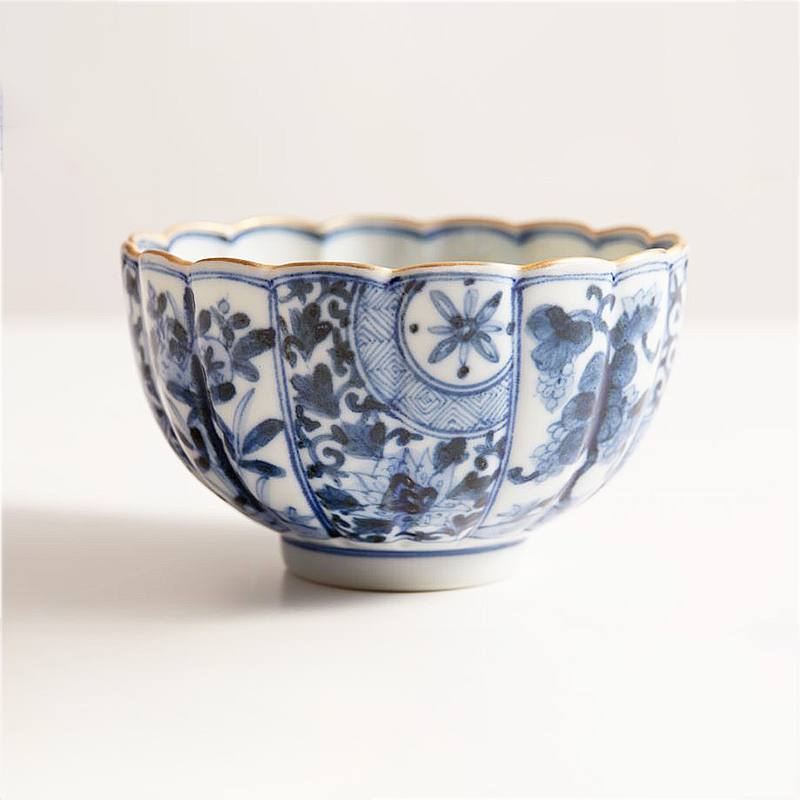
Discover Kutani Ware: A Unique Japanese Art Form
Kutani Ware, known as Kutani-Yaki in its native Japan, stands as a vibrant testament to the country's rich pottery tradition. Originating from southern Ishikawa Prefecture cities such as Nomi, Komatsu, Kaga, and Kanazawa, Kutani Ware is celebrated for its distinctive colors and intricate designs.
The allure of Kutani Ware extends far beyond Japan, captivating admirers worldwide and presenting lucrative export opportunities. Since its initial exportation, these exceptional pieces have gained widespread popularity, gracing homes and collections globally. From elegant tea sets to practical mugs and exquisite serving dishes, Kutani Ware offers a perfect blend of artistic charm and functional beauty, making it an ideal choice for both gifts and memorable dining experiences.
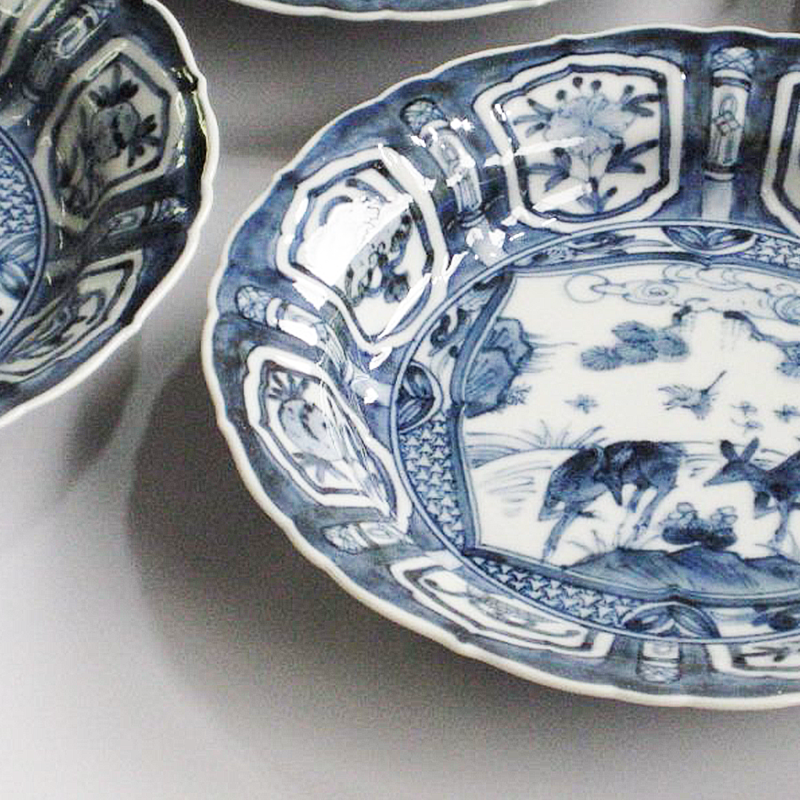
Kutani Ware: Artistry in Every Piece
Step into the world of Kutani Ware, where each piece is a masterpiece of color and craftsmanship. Originating from the southern reaches of Ishikawa Prefecture—including Nomi, Komatsu, Kaga, and Kanazawa—Kutani Ware, or Kutani-Yaki, represents a unique facet of Japanese pottery tradition.
Renowned for its bold hues and intricate patterns, Kutani Ware has captivated admirers worldwide, finding its way into homes and collections globally through international exportation. Whether it's a stunning tea set, an elegant bowl, or a practical mug, each item of Kutani Ware blends artistic excellence with practical functionality, ideal for both gift-giving and enhancing special dining occasions.
Customer FAQ
What are the characteristics of Kutani Ware?
Exquisite Kutani Porcelain: Where Artistry Meets Mastery
Embark on a journey into the world of Kutani Kiln, where porcelain pottery transcends craftsmanship to become coveted dinnerware cherished by collectors worldwide. Each piece is a testament to Kutani's unique styles:
1. Mokubei Style: Inspired by Chinese Ink Mastery
The Mokubei style channels the elegance of Chinese ink painting techniques, infusing each piece with a serene beauty that captivates the eye.
2. Yoshidaya Style: Vibrant Symphony of Colors
In the Yoshidaya style, hues of purple, green, yellow, and dark blue blend harmoniously, forming intricate patterns that mesmerize and enchant.
3. Eiraku Style: Gilded Opulence
Elevating from Yoshidaya, Eiraku style adorns base colors with layers of shimmering gold over a rich crimson, creating Kutani ware that exudes opulence and allure.
4. Lidaya Style: Narrative in Porcelain
The Lidaya style, or Hachirode, breaks tradition with its focus on human figure paintings, transforming dinnerware into a canvas that tells stories of grace and emotion.
5. Shoza Style: Fusion of Artistic Brilliance
Shoza style harmonizes all four Kutani techniques into a symphony of artistic brilliance, showcasing the kiln's mastery over centuries-old traditions.
Every piece begins as a blank canvas of pure white ceramic, meticulously painted with patterns like komon using zaffre, enriched with cobalt oxide. Each stroke, meticulously applied by skilled artisans, defines the piece's intricate design.
The ceramic masterpiece undergoes a meticulous process, enduring hours in the kiln to achieve perfection. Electrically heated kilns ensure precision, allowing pigments to transform into radiant, translucent hues under intense heat.
From teacups to saucers, each vessel emerges as a three-dimensional painting, a testament to Kutani Kiln's dedication to craftsmanship and artistic excellence. Discover the allure of Kutani porcelain—where tradition meets innovation in every stroke.
What are the typical color style and designs of Kutani Ware?
Kokutani Style - Old Kutani Style
Echoing the tumultuous era of the Tokugawa Shogunate's early days, Kokutani Style exudes boldness with its vigorous brushwork and rich, masculine hues. Overglaze enamels of deep blues, vibrant yellows, and regal purples form striking compositions depicting florals, foliage, and landscapes. Following Ming Dynasty influences, the Kaga clan, compelled by the Shogunate, temporarily halted kiln operations due to smuggling concerns, pausing production for a century.
Mokubei Style
Resonating with the turbulent early Tokugawa Shogunate period, Mokubei Style showcases robust brushstrokes and strong, masculine tones. Its bold overglaze enamel compositions feature vivid blues, brilliant yellows, and majestic purples, often depicting floral motifs, botanical scenes, and expansive landscapes. Following the adoption of Ming Dynasty techniques, the Kaga clan, under Shogunate orders, dismantled its kilns amidst smuggling accusations, resulting in a century-long hiatus in production.
Yoshidaya Style
Originating from the Kutani-yaki kilns established by Yoshida-ya, a prosperous merchant of the Daishoji clan, Yoshidaya Style flourishes during the Bunka-Bunsei period of the Tokugawa Taihei era. Distinguished by its gentle painting technique, it faithfully inherits the essence of old Kutani aesthetics, featuring delicate depictions of flora and fauna, serene landscapes, and intricate floral patterns in the classic trio of blue, yellow, and purple.
Iidaya Style
Influenced by Chinese scholarly pursuits, Iidaya Style vividly portrays Chinese customs and traditions, such as the "Seven Sages of the Bamboo Grove." Its meticulous artwork, embellished with fine crimson lines, often gilded for added elegance, evokes a refined and cultured ambiance.
Eiraku Style
Drawing inspiration from Eiraku Wazen of Kyoto, Eiraku Style epitomizes opulence. Entire vessels are lavishly adorned with crimson over gold, with intricate patterns meticulously applied in a single stroke. Featuring motifs of flowers, birds, animals, and insects, this style exemplifies a harmonious blend of artistry and luxury.
Syouza Style
Emerging during the Meiji era amidst Japan's embrace of Western influences, Syouza Style embodies a fusion of Japanese tradition and Western aesthetics. The "colored gold brocade" technique captures this cultural crossroads with its intricate depictions of exquisite flowers, birds, figures, and landscapes, integrating post-Kutani innovations that gained popularity post-Meiji restoration.
Aochibu Style
Popularized during the Taisho era, Aochibu Style is distinguished by its meticulous application of fine green "blue grains" atop a base color. Uniform in size and spacing, these grains, often complemented by white and gold accents, impart a sense of tranquility and nobility to each piece.
Morietsuke Style
Introduced around 1924 by Nishi-Taikichi, Morietsuke Style showcases the art of Mori-e painting. This technique, prominently featured on figurines like lions and beckoning cats, achieves a three-dimensional effect through specialized paints, offering a tactile and visually engaging experience.
Saiyuu Style
Saiyuu Style employs a technique where vessels are entirely glazed in a five-color palette—red, green, yellow, purple, and blue—layered to create a gradual and graceful transition of hues. This method enhances the visual depth and elegance of patterns, achieving a captivating aesthetic appeal.
Yuurikinsai Style
Yuurikinsai Style distinguishes itself with the application of gold powder or leaf beneath a transparent glaze, ensuring a soft, lustrous finish. Unlike conventional gilding, where gold is applied over glaze, here, the gold integrates seamlessly within the glaze, imparting a gentle yet radiant glow to the artwork.
Ginsai Style
Ginsai Style utilizes silver leaf beneath a transparent or five-color glaze, preserving its luster without tarnishing. This technique yields a soft-toned, elegantly expressive finish, capturing the essence of refined beauty.
How to take care of each Kutani piece?
Embracing the Art of Kutani Ware: A Guide to Care and Use
Each piece of Kutani ware is a masterpiece, meticulously handcrafted and painted, deserving of special care to preserve its beauty and functionality over time. Here's how you can ensure each Kutani piece remains as stunning as the day it was created:
Preparation and Usage
Before your first use, it's crucial to prepare each piece to enhance its longevity. Due to the clay's absorbent nature, Kutani ware can retain food aromas without proper treatment. To prevent this, we recommend glazing each piece before use:
Glazing Technique: Easily accomplished at home, immerse Kutani tableware in a pot filled with rice water or a solution of water mixed with flour or potato starch. This process seals the clay's pores, creating a protective layer that prevents odors and food residue from lingering.
Place your Kutani ware in a large pot filled with starch water, ensuring it is completely submerged.
Heat the water gently for approximately 20 minutes, avoiding vigorous boiling.
Allow the pot to cool naturally with the tableware inside.
Clean and dry each piece thoroughly before use.
For optimal dining experiences, consider warming plates with warm water before serving hot dishes and cooling them with cold water for cold meals. This simple step elevates the dining experience while safeguarding your Kutani ware.
Care and Maintenance
While Kutani ware is dishwasher safe, we recommend hand washing with a mild detergent and soft sponge to preserve its intricate designs and vibrant colors. Vigorous scrubbing can diminish its shine and delicate patterns over time.
Ensure each piece is completely dry before storing to prevent any moldy odors. Given its clay composition, thorough drying before neatly storing in cupboards is essential.
Microwave Usage
Most Kutani ware pieces are microwave safe for convenience. However, pieces adorned with delicate gold or silver accents should be excluded from microwave use to avoid damage to their exquisite detailing.
Setting the Table with Kutani Ware
Transform any meal into a celebration of art by adorning your table with Kutani ware. Each piece not only enhances the aesthetic appeal of your dining experience but also adds a touch of tradition and elegance. Whether it's a family dinner or a festive gathering, Kutani ware elevates every occasion, creating cherished memories that endure.
Experience the joy of dining with Kutani ware—where art meets functionality, turning every meal into a celebration of craftsmanship and culture.
Will my package be packed safely and where will my order be shipped from?
We pack your products carefully to ensure a trouble-free delivery of your goods. We regularly ship more than hundreds of packages per month, but only a few cause problems. We guarantee our products to arrive in perfect condition. If the items from your order are damaged during shipping, we are deeply sorry but please get in touch with our customer support with a detailed photo of the damage within 30 days of your delivery. We will exchange or refund as soon as we can confirm. All orders will be shipped from China. Our international shipping is offered through China post, DHL, and FedEx.
















